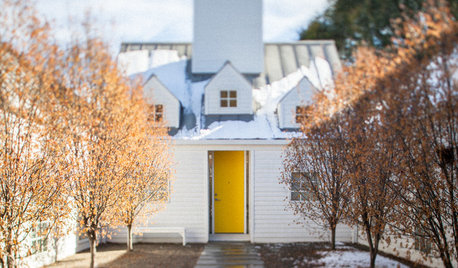New construction sewer clogs
barrychan
12 years ago
Related Stories

WORKING WITH PROSYour Guide to a Smooth-Running Construction Project
Find out how to save time, money and your sanity when building new or remodeling
Full Story
BUDGETING YOUR PROJECTDesign Workshop: Is a Phased Construction Project Right for You?
Breaking up your remodel or custom home project has benefits and disadvantages. See if it’s right for you
Full Story
UPHOLSTERYFurniture Clinic: End the Curse of Slouchy Couch Cushions
Prolong the life of your couch with this inexpensive fix that’s so easy, even a beginning sewer can do it
Full Story
MOVINGHome-Buying Checklist: 20 Things to Consider Beyond the Inspection
Quality of life is just as important as construction quality. Learn what to look for at open houses to ensure comfort in your new home
Full Story
ARCHITECTUREDwellings vs. Houses — a Matter of Distinction
One speaks to mobility; the other, permanence. See how the differences in these homes play out in materials, siting and construction
Full Story
HOUZZ TOURSHouzz Tour: Family Builds Off the Grid Near the Cascade Mountains
Homeowners carefully construct a weekend home on 20 acres in remote northeast Washington
Full Story
HOUSEKEEPINGWhat's That Sound? 9 Home Noises and How to Fix Them
Bumps and thumps might be driving you crazy, but they also might mean big trouble. We give you the lowdown and which pro to call for help
Full Story
STUDIOS AND WORKSHOPSA Stitch in Time: Creative Sewing Spaces
Sewing rooms have become popular again as people of all ages embrace simple crafts they can do at home
Full Story
HOUZZ TOURSMy Houzz: A Master’s Design Goes Green and Universal
Adapting $500 house plans in Pittsburgh leads to planned Platinum LEED certification and better accessibility for one of the owners
Full Story
LANDSCAPE DESIGNHow to Site and Size a Rain Garden for Your Landscape
Installing a rain garden is an excellent way to reduce runoff and return water to its source
Full Story





brickeyee
lazypup
Related Professionals
Arlington Handyman · Wolf Trap Handyman · Bellevue Kitchen & Bathroom Remodelers · Bloomingdale Kitchen & Bathroom Remodelers · Fairland Kitchen & Bathroom Remodelers · Fort Pierce Kitchen & Bathroom Remodelers · Hanover Township Kitchen & Bathroom Remodelers · Los Alamitos Kitchen & Bathroom Remodelers · Ogden Kitchen & Bathroom Remodelers · Olney Kitchen & Bathroom Remodelers · Patterson Kitchen & Bathroom Remodelers · Port Arthur Kitchen & Bathroom Remodelers · Rochester Kitchen & Bathroom Remodelers · Sweetwater Kitchen & Bathroom Remodelers · Ridgefield Park Kitchen & Bathroom RemodelersbarrychanOriginal Author
Ozone89
barrychanOriginal Author
Ozone89
barrychanOriginal Author